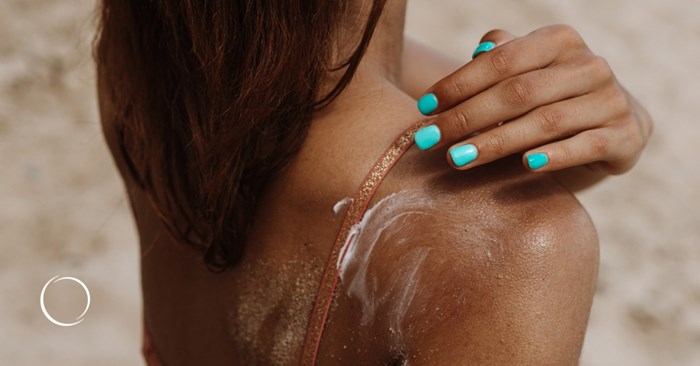Summer sun care is plastic surgery recovery care

Summer is in full swing, and the sun's harsh rays are bearing down on everyone, whether you are hitting the beach or relaxing at home. Many patients don't consider how the sun can impact their recovery after undergoing minimally invasive treatments and plastic surgery procedures. Yet, proper sun care is crucial to recovery and can help protect your investment in yourself.
Before you step outside, it's time to reevaluate your summer routine and ensure you are using the right products to protect your skin from the brutal effects of summer's UV rays.
Why is wearing sunscreen after a procedure important?
Fun in the sun may be the ultimate definition of summer. Still, sunshine is not your friend if you've undergone a surgical procedure or minimally invasive treatment like a laser or chemical peel. Why?
"UV radiation can trigger inflammation," said Roy Kim, MD. "The UV radiation of the sun can actually directly damage healing skin cells. Sun exposure can break down healing collagen fibers and can cause post-surgery color changes and hyperpigmentation."
Fresh skin, like skin exposed to lasers or chemicals, and scar tissue from surgeries, is significantly more sensitive to UV radiation than normal skin. This sensitivity makes it more prone to burns, sun damage and hyperpigmentation. Too much exposure can also slow the wound healing, potentially causing thicker or raised scars.
If you've invested time and money in getting plastic surgery, the last thing you want to do is jeopardize the healing process or make the appearance of a scar worse, not better. The same applies to laser treatments, chemical peels or other minimally invasive treatments. UV rays can penetrate sensitive skin, causing increased sun damage, irritation, inflammation and other complications. The sun can compromise your results and cause issues, like hyperpigmentation, which some of these procedures are meant to address, plus sun exposure without adequate protection can lead to skin cancer.
Choosing the right sun protection post-procedure
First things first, any sun protection is better than nothing. However, some products may offer better protection for sensitive skin than others.
There are two different formulations of sunscreen – physical/mineral and chemical. Chemical sunscreens work by absorbing UV rays before they can penetrate the skin. These chemicals convert UV rays into heat, which the body releases.
Physical sunscreens contain minerals, typically titanium dioxide or zinc oxide. These minerals sit on the skin's surface and reflect UV rays away from it, acting more like a shield. Dr. Kim and Sara Dickie, MD, both recommend them.
"I think the best sunscreen post-treatments is a mineral (physical) sunscreen SPF 50 or higher," said Dr. Dickie, adding she likes sunscreen products that contain the mineral zinc.
Dr. Kim also recommended finding sunscreen with an SPF of at least 50.
"Zinc oxide or titanium oxide works immediately and does not rely on absorption to work," said Dr. Kim. "Chemical sunscreens take 20 to 30 minutes to start working, and absorption can cause skin irritation."
It's not necessarily that chemical sunscreens are harmful or less effective than mineral ones. Still, chemical formulations have drawbacks when healing after a procedure or treatment.
"They do get absorbed, and if you've just had a procedure or your skin barrier is in any way compromised, the chemical sunscreens can be irritating if not outright rash-causing," said Dr. Dickie.
Some mineral sunscreens tend to leave a faint white cast or "ghostly" appearance on the skin. New, sheer formulations tackle this issue and protect without the white haze. Look for products that claim to be sheer, fluid or tinted.
You can distinguish between physical and chemical sunscreens by examining the active ingredients listed on the package. Physical sunscreens contain minerals such as zinc oxide or titanium dioxide. Chemical sunscreens contain active ingredients such as avobenzone, octinoxate, octisalate, octocrylene, oxybenzone or homosalate.
Dr. Dickie has specific mineral stick and lotion options that she recommends to patients. She said not only do patients tolerate the formulations well post-procedure, but some patients also report that the products help alleviate the discomfort associated with laser treatments.
She recommended that patients apply sunscreen diligently for at least six weeks after their procedure. While you're at it, keep using it and make sunscreen a part of your daily routine! Sun care is recovery care and can help you protect your delicate skin and plastic surgery investment. It can also help protect your skin from damaging UV rays, which can lead to premature aging, dark spots, fine lines, wrinkles – and skin cancer.
To find a qualified plastic surgeon for any cosmetic or reconstructive procedure, consult a member of the American Society of Plastic Surgeons. All ASPS members are board certified by the American Board of Plastic Surgery, have completed an accredited plastic surgery training program, practice in accredited facilities and follow strict standards of safety and ethics. Find an ASPS member in your area.
